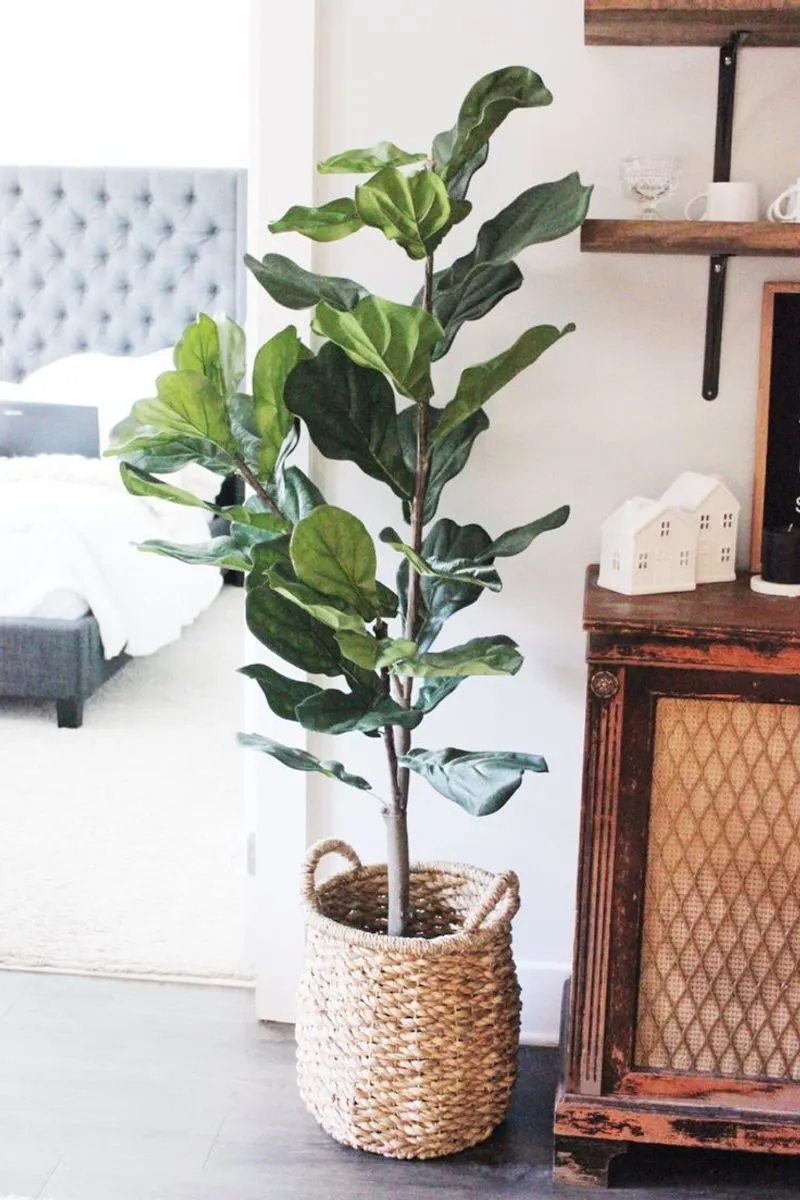Houseplants can transform a living space, adding beauty, fresh air, and a touch of nature to your home. However, not all plants are as delightful as they seem. Some come with unexpected challenges, from stubborn care requirements to surprising downsides like attracting pests or triggering allergies.
In this list, we’ll uncover 10 houseplants that might make you regret bringing them indoors.
Whether it’s due to their finicky nature, invasive growth, or hidden drawbacks, these plants serve as a cautionary tale for anyone looking to green up their home.
Before you head to the nursery, take note of these potential troublemakers!
Fiddle Leaf Fig

The allure of the Fiddle Leaf Fig can be irresistible, yet its demands are often underestimated. Achieving the right balance of light and water can make it a finicky resident. Easily displeased, it may sulk at the slightest environmental change.
Brown spots or leaf drop are common grievances voiced by its owners. Not exactly a set-it-and-forget-it plant, it requires constant attention.
Despite its Instagram fame, many find themselves pondering if the aesthetic payoff is worth the effort. With its fussy nature, it’s no wonder some wish they had skipped this leafy diva altogether.
Spider Plant

Spider Plants often appear as a beginner-friendly choice, but they come with their quirks. While generally robust, they can become invasive, sending out numerous offshoots. This can lead to a tangled mess if not regularly pruned.
Frequent watering and the right lighting conditions are crucial to keep them thriving. Nevertheless, their love for spreading can transform a neat space into a chaotic jungle.
Owners quickly learn that their prolific nature requires more maintenance than anticipated. This surprising twist leaves some wishing they had opted for a more contained option.
English Ivy

English Ivy exudes an old-world charm that’s hard to resist, yet it has a tenacity that can overwhelm even seasoned plant lovers. Known for its fast growth, it can quickly dominate its surroundings.
This relentless spread can lead to a never-ending battle to keep it in check. It also harbors pests, which can become a nuisance indoors. While its lush appearance might initially delight, the ongoing maintenance can wear down even the most dedicated caretakers.
What seemed like an easy choice often turns into a regretful commitment.
Peace Lily

The Peace Lily is often heralded for its air-purifying qualities. However, its dramatic nature can be a source of stress. Its leaves droop significantly when thirsty, requiring frequent attention to stay perky.
Finding the perfect spot is essential, as too much sun can scorch its leaves, while too little light hinders blooming.
Its sensitivity to water quality often surprises new owners, as it can react poorly to tap water. This delicate balance and demand for care lead many to reconsider their choice, seeking less temperamental alternatives.
Boston Fern

Boston Ferns can transform a space with their graceful fronds, yet they come with a set of challenges. High humidity and frequent misting are essential to prevent crispy leaves.
Their sensitivity to dry air often becomes apparent during winter months, requiring extra effort to maintain optimal conditions. Regular watering and positioning away from heat sources are crucial. Despite their beauty, their maintenance can be demanding.
This high upkeep often leaves owners wishing for a plant that requires less environmental control, making it a less favored choice over time.
Aloe Vera

Aloe Vera is renowned for its healing properties, but it can be surprisingly tricky indoors. While it thrives on neglect, it requires specific light conditions to flourish. Too much shade leads to leggy growth, while too much direct sun can scorch its leaves.
Its preference for dry conditions can be a blessing and a curse, as overwatering is a common pitfall. Careful placement and watering are essential to avoid a wilted appearance.
Despite its reputation, the balance required often frustrates those who expected an easy-growing medicinal plant.
Rubber Plant

The Rubber Plant is admired for its robust appearance and glossy leaves, yet it can be a challenging companion indoors. Its preference for bright, indirect light and consistent watering can be demanding.
Sudden changes in environment or care often result in leaf drop or discoloration. Its milky sap can also pose issues, as it’s mildly toxic and can cause skin irritation. This combination of beauty and fussiness frequently leads owners to second-guess their decision. Many soon find themselves yearning for a more forgiving housemate.
Calathea

Calathea plants are adored for their striking foliage, yet their care requirements can be quite intricate. They demand high humidity and consistent moisture, conditions not always easy to maintain indoors.
Brown leaf edges are a common complaint, often resulting from improper watering or low humidity. Their sensitivity to drafts and water quality adds another layer of complexity.
While their decorative appeal is undeniable, the level of care they require can become burdensome. Homeowners often find these plants more challenging than anticipated, leading to a sense of regret.
Monstera Deliciosa

Monstera Deliciosa is celebrated for its dramatic leaves, yet its rapid growth can be a handful. With the right conditions, it can quickly outgrow its space, requiring regular pruning and repotting.
Its aerial roots can be visually unappealing and need frequent trimming to keep them at bay. The size it can reach often surprises new owners, turning a beautiful feature into an overwhelming presence. Despite its popularity, the effort to manage its exuberance often leads to reconsideration. Many find themselves wishing for a more manageable plant.
Succulents

Succulents are often touted as perfect for beginners, yet they come with a surprising set of challenges. Finding the right balance between water and light can be tricky, as too much of either can lead to issues.
Overwatering is a common mistake, resulting in root rot, while too little light can cause them to stretch unattractively.
Their minimalist care can be misleading, often requiring more adjustment than expected. Their deceptive simplicity often leaves novice plant owners grappling with unexpected difficulties, turning what seemed like a foolproof choice into a regretful endeavor.

